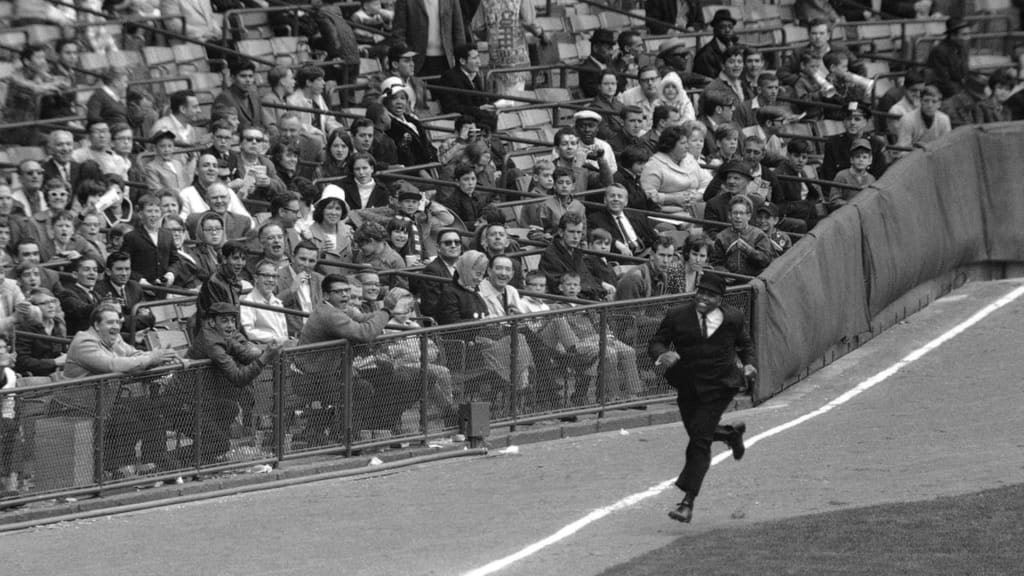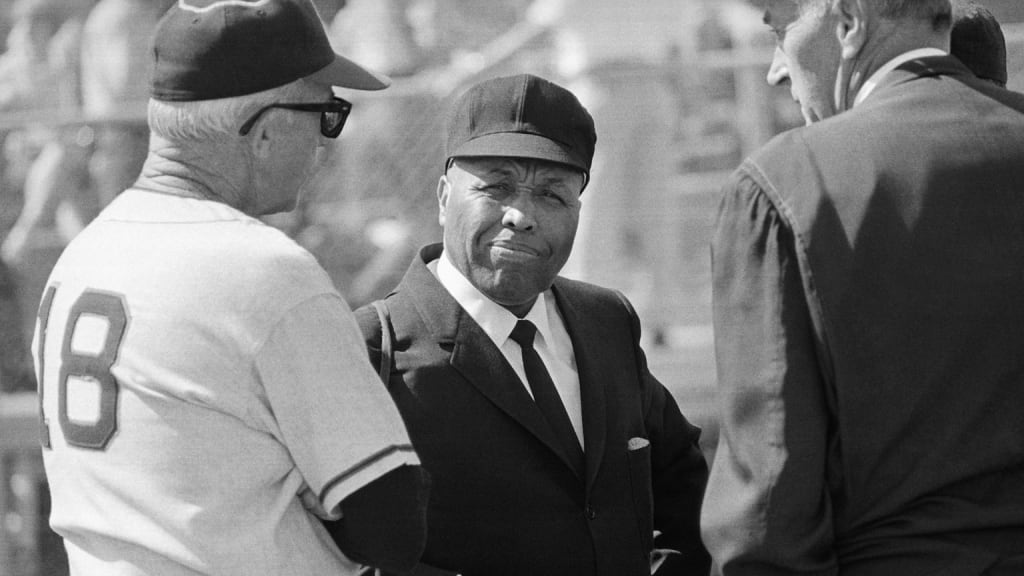Twenty years after Jackie Robinson broke the color barrier, Emmett Ashford did the same for umpiring, becoming the first Black umpire in Major League Baseball history when he debuted in 1966. To this day, the charismatic and pioneering Ashford occupies a particular place in baseball history as not only MLB’s first Black umpire but also its first to work an All-Star Game (‘67) and umpire a World Series (‘70).
But those accomplishments were far from the totality of Ashford’s life, which is explored in depth in "Called Up," a new documentary about the trailblazing ump. Created by executive producer Raymond Bell and director Doug Harris, the film utilizes classic footage, decades-old still photographs and a trove of original interviews to paint a portrait of a singular figure who was larger than life in his day but whose impact is sometimes overlooked in the rich history of the civil rights movement.
As MLB celebrates Jackie Robinson Day this weekend, there is no better time to change that. "Called Up" is on track for a public television debut later this year.
“We started peeling back the onion on the story of Emmett Ashford, and we were really floored reading the initial research,” Bell told MLB.com recently in a phone interview. “His story really jumped off the page when you started to really understand who he was. He wasn’t like those traditional, stoic umpires. He was entertaining, he put on a show, and fans came to see him. We said to ourselves, ‘Who is this guy?’ His story to the Major Leagues was so inspirational, we were dumbfounded that we didn’t know who he was. It was a no-brainer for us to look [deeper] into it.”
The result is a film that chronicles Ashford’s achievements as much as it explores the inner workings of a man of exceptional personality and ambition, whose deep-seated love for the game of baseball and outsized charisma allowed him to overcome insurmountable challenges. He dared to dream up a life that didn’t exist until he lived it, and in doing so became something that hasn’t existed since: a celebrity umpire.
“Who would’ve thought of an umpire having fans?” Bell said.
But Ashford wasn’t like any other umpire. He was known for his style and flair. He wore a bow tie and cufflinks on the field, and he essentially invented the big “Striiiiiiiiiiiiiiiiike threeeeeeee” call, overexaggerating both the actual call and its presentation. The fans loved it, and Ashford became a star in his own right in the ultra-popular Pacific Coast League of the late 1950s and early ‘60s thanks to his theatrical umpiring style.

Players, managers and fellow umpires didn’t always love Ashford’s flamboyant style; he had to battle a reputation as a “showboat” along with the systemic racism and discrimination rampant in that time. But Ashford’s charisma made him famous in celebrity-obsessed Los Angeles, where he appeared on television shows and rubbed elbows with Black cultural leaders in the arts, fashion and other areas. He also used a shrewd public relations sense to become a fixture in the Black press, and over time, his star began growing nationally.
“They called it ‘The Show,’” said Harris, who also directed a recent documentary on trailblazing football All-American Walter Gordon. “When you came to the game, you not only went to watch the baseball game, you also went to watch Emmett’s show. That was real popular here on the West Coast to see Emmett and his antics, in particular when Emmett called games behind the plate. That was the real show.”

Ashford was a pioneer all his life. He was the first Black class president at Jefferson High School in Los Angeles and editor of the school newspaper. He was the first Black man in the Payroll and Finance Division of the Los Angeles Post Office and the only Black player on the semi-professional team called the Mystery Nine, which led directly to his umpiring career full of singular distinctions.
He spent 12 years as an umpire in the PCL before being promoted to the Majors for his historic debut on April 11, 1966. Ashford retired from umpiring after the ‘70 World Series, took a public relations role in the Commissioner’s office under Bowie Kuhn and spent his final decade as an international ambassador for the game of baseball. He died of a heart attack in ‘80 and is buried in Cooperstown, N.Y.
MLB umpires wore 'EA' patches to honor Ashford on the 50th anniversary of his MLB debut on April 11, 2016. Bell and Harris’ new film is a further honoring of a legacy worth remembering.
“We really cared to tell a story about a man that really had more to him than just being an umpire,” Bell said. “He was a man of the arts, of education. His story isn’t one that just focuses on baseball but has a life story of a businessman. Everything about him is special.”
